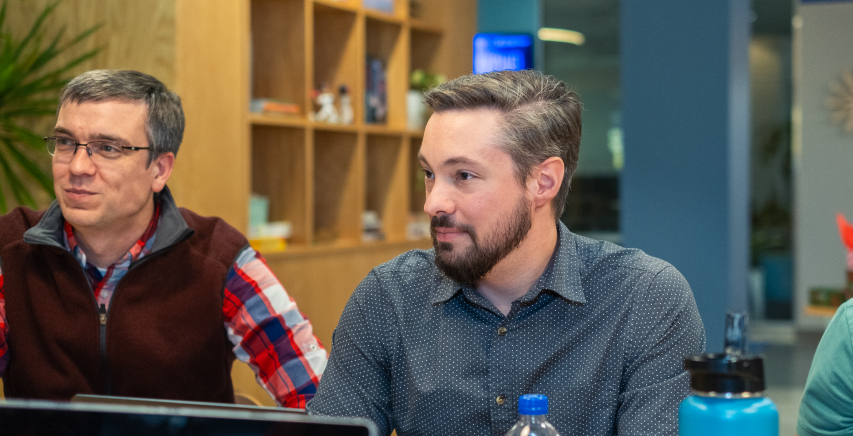If your website is designed on WordPress, you know that there was a major upgrade recently.
Part of what made WordPress popular was that anyone from a college student to a cooking expert could blog. This made content management easy, but, overtime, as the users changed the functionality needed to as well.
Users talked, and WordPress listened. They reimagined the classic content editor, Gutenberg, and introduced a way to customize content in a way that maximizes the page’s real estate, allows for different types of media, and allows you to preview the post.
What is Gutenberg?
Gutenberg is your content in artisanal, hand-made, organic, stackable blocks. Encouraging an advanced creative process, the new editor makes customizing your work a streamlined process.
Before, the content editor was basically an uninspiring space for users to present text. You could put your own spin on whatever you wanted to add – be it media content or a text layout format – but that required an intermediate understanding of code and a bit of back-end experience. With Gutenberg and the updated WordPress, blocks make everything easier.
Consider the web-creative learning curve considerably more scalable.
Putting the pieces to work
Here are some of the highlights of Gutenberg’s features:
- Blocks don’t have to be confined to text. They can work as
- Photographs, ranging from a single image, a cover image, or a gallery
- Videos, featuring controls for autoplay, fullscreen, captions, and your videos’ alignment
- Audio content, with its own constraints for captions, alignment, displaying content to a native HTML5 player
- Tables or columns of content
- Incorporate plugins into blocks. Though you don’t want to add too many plugins for the sake of your site’s security, the most popular add-ons can be tailored into individual blocks.
- Shortcodes – i.e., code specific to WordPress that allowed for much of the customization with the classic editor – are now a thing of the past. Gutenberg is all of the prior customization sans shortcodes. All you have to do is edit directly within the block.
- Before you make your content live and public, Gutenberg allows you to preview how it all looks.
WordPress is designed for anyone to begin publishing content, and Gutenberg builds on that idea. It is WordPress’ first major overhaul since its 2003 debut, so it will take a bit of getting used to. However, consider the above points a guide for getting started. From there, WordPress 5.0 makes writing content a core priority.
How do I get it?
Like any software update, Gutenberg is an easy installation.
It’s a good idea to backup your existing site, just in case. It’s free, quick, and relatively painless. When in doubt, have a back-up. If you want to take it a step further, it’s also a good idea to stage your site and test it in the latest version of WordPress. Whatever you decide, ensure that your site is compatible with the latest update, and then press the button under the admin page.
Consider yourself updated!
Now that you have Gutenberg, it becomes the default editor for the newest WordPress. Check for regular updates (as any good content creator should), but the process is mostly automatic since WordPress 5.0 and Gutenberg run hand-in-hand.
It is possible to run Gutenberg on an older version of WordPress, but that version is WordPress 4.8. This plugin has about 20,000 active installations, but that doesn’t make it a viable alternative to WordPress 5.0. Gutenberg is the new standard WordPress editor, and that means it might have a few stability issues that need to be worked out. However, don’t forget the future of content management.
What if I want to rollback to the classic editor?
It is possible to revert back to the WordPress of days past, but this is a route best taken with caution or at least, the promise to learn and adopt the latest update. Gutenberg might require a bit of a learning curve, and that’s fine. The platform is designed to be more intuitive than the standard editor, but it might take a bit of time to become natural.
As it happens, the classic WordPress editor is supported through New Year’s Eve, 2021. Since Gutenberg is a fundamental shift for WordPress, using the classic editor plugin is a great way to hone your content editing craft to the latest version. Keep in mind, however, that you need to keep learning Gutenberg.
Conclusion
WordPress is a content management empire, built on resources, community, and usability. Whether you’re new to WordPress or you’ve been blogging since day one, this is a shared advantage as common as any of the WordPress annual site themes. Gutenberg being the first major revamping of the system, it offers unprecedented advantages in terms of your creative process, new forms of media, and your writing.
Although in its infancy, Gutenberg is another step in setting yourself apart as a content creator. Consider it a direct correlation of growth: as you learn Gutenberg, the editor improves with you.

